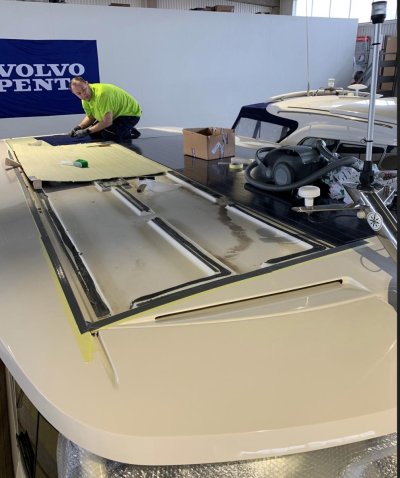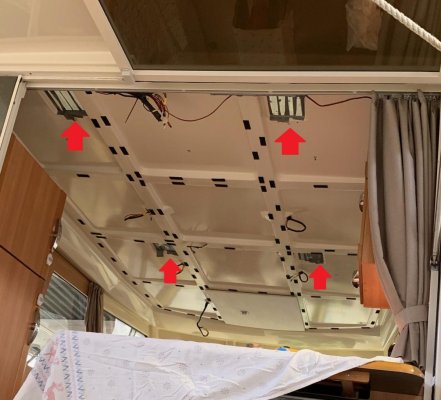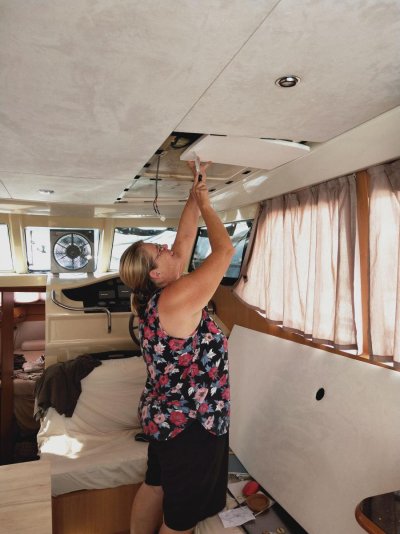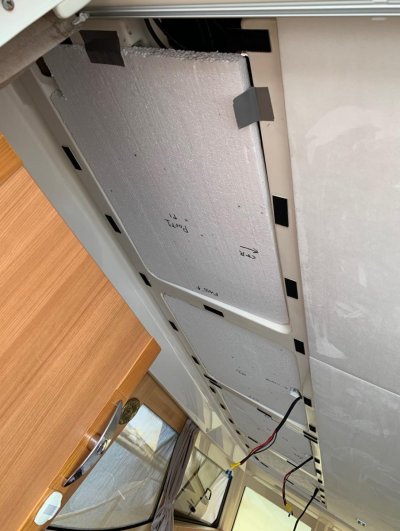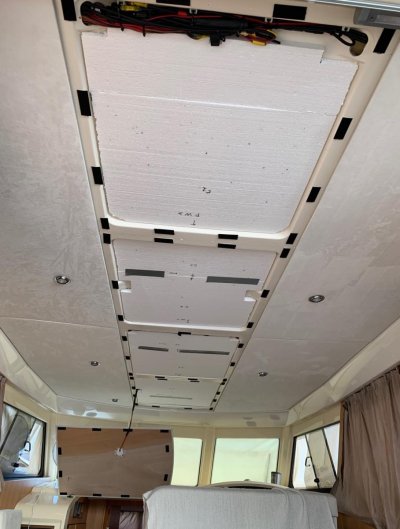If it's like on my GL33 -- and I strongly believe it is -- the panels are held up by industrial-strength Velcro.
To remove them, wear some disposable vinyl gloves so you don't get dirt on the white material, then find an exposed end where you can get a grip to pull down. Most likely this will be all the way aft where the entry door is. At the corner of one of the panels, pull down gently, but firmly, until it gives way. Continue to work your way around the panel. Each panel will probably have 6-8 Velcro attachments. If some panels have overhead lights in them, you will need to take care to disconnect or cut the wires. Mark the light wires with tape, if necessary, to ensure correct re-connection/polarity. I used crimp plugs when re-installing the lighting wires. Also, make sure you have the solar charging entirely shut down before you disconnect the power wires for the solar panels. Take great care to get the polarity correct again, when reconnecting them by marking the wires with tape, if necessary. It may disrupt your statistics and battery charge status when you do this, but after a couple of charge sessions/days they should sort themselves out again. At least this is how it was in my case.
The greater challenge is re-installing the panels with the exact correct alignment. For re-installation, I would recommend starting on the interior of the boat and working your way aft, because I think there are some millimeters of space there to absorb any variance in position. If you start aft and work forward, you may find you will have to remove everything and do it again if there's not enough room to seat the panel against a non-removed panel. Hope this makes some sense! Finally, when you press a panel up to lock the Velcro in place, once you think it has seated, press again hard -- even hitting it with the side of your fist. You will likely find it will seat one step further.

